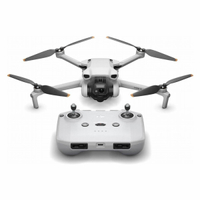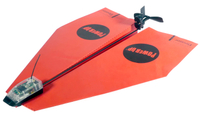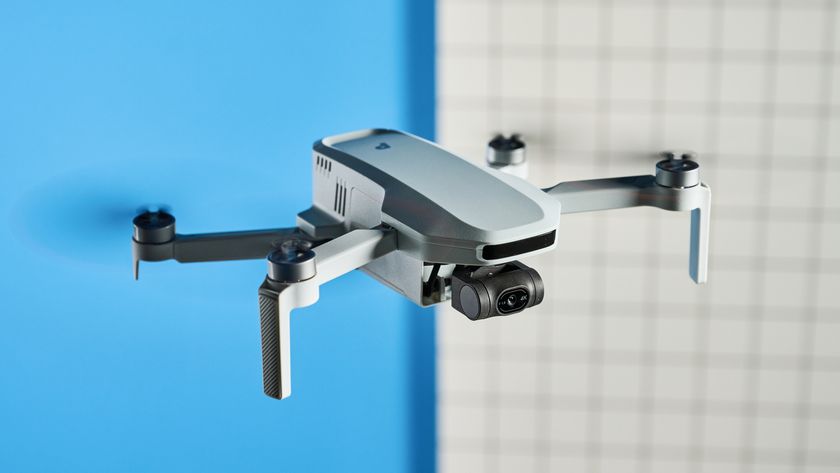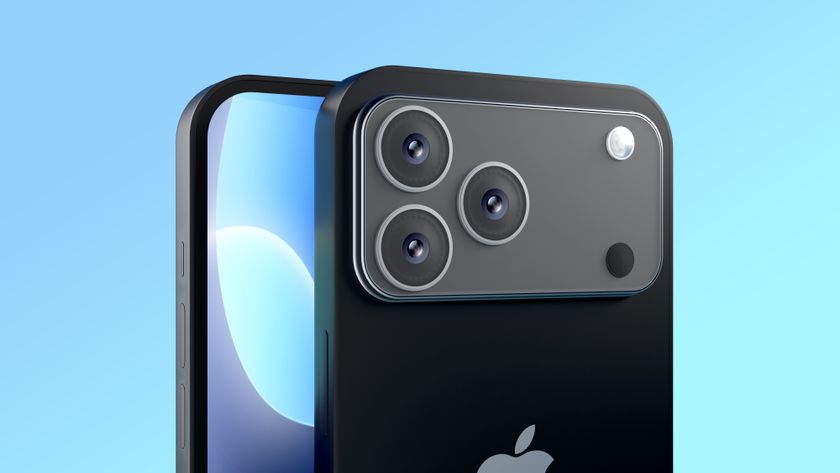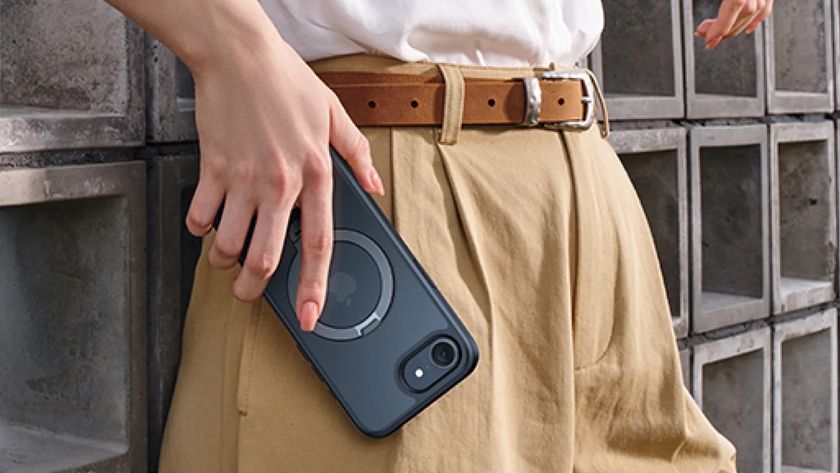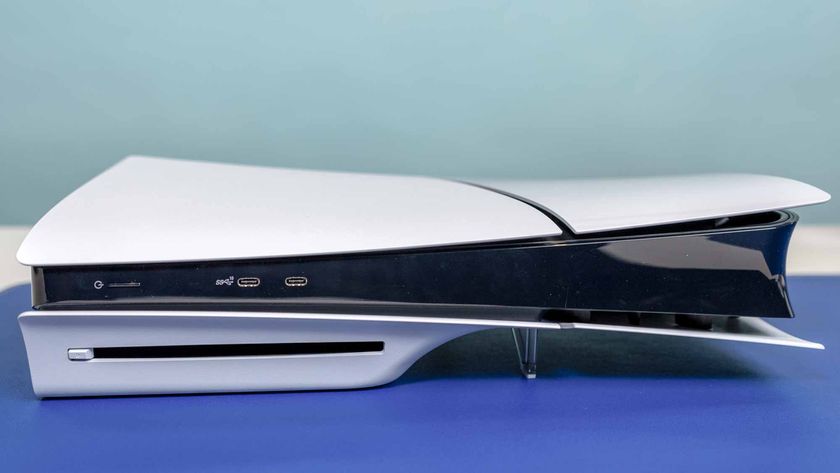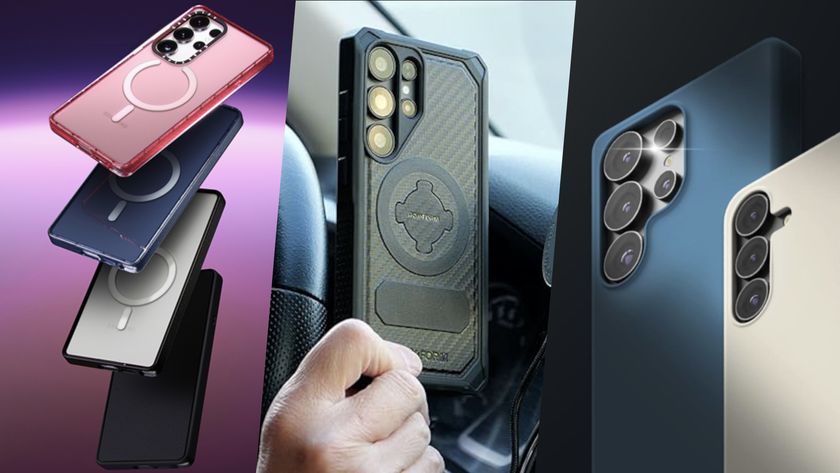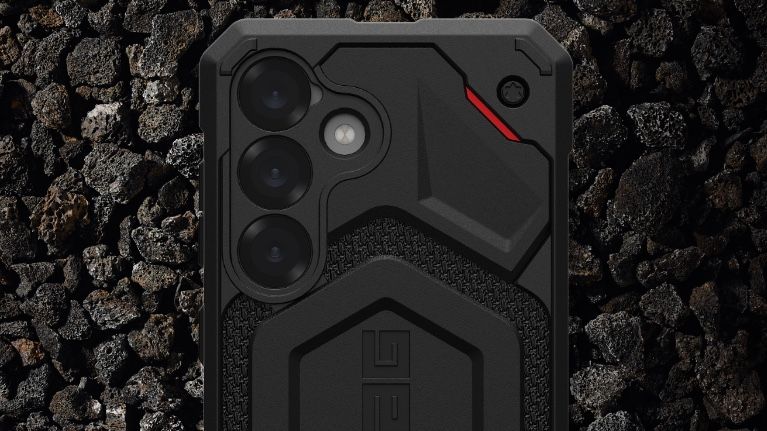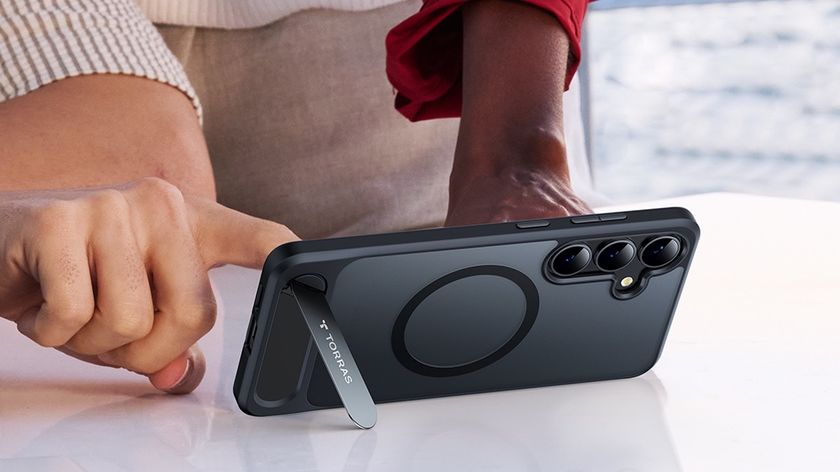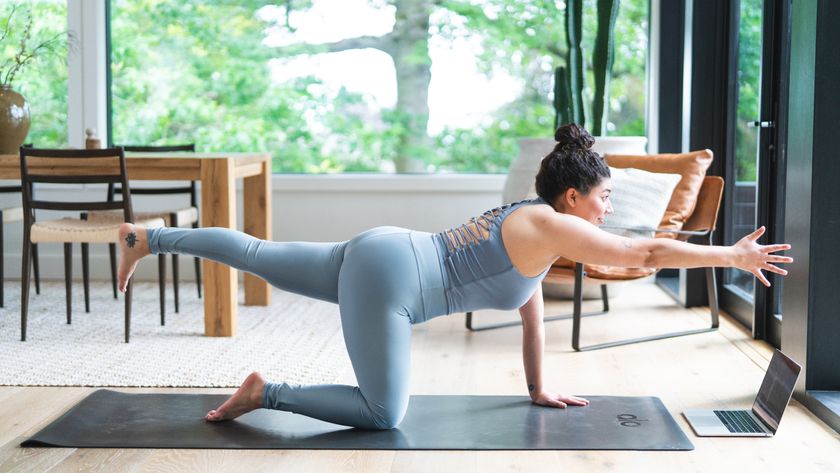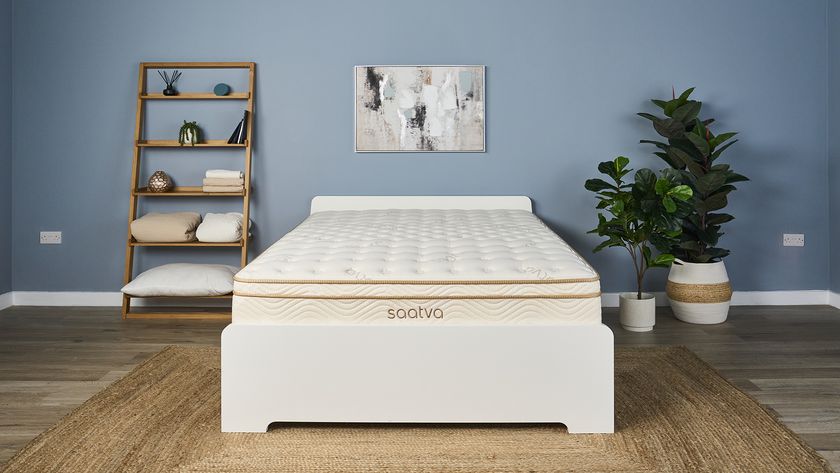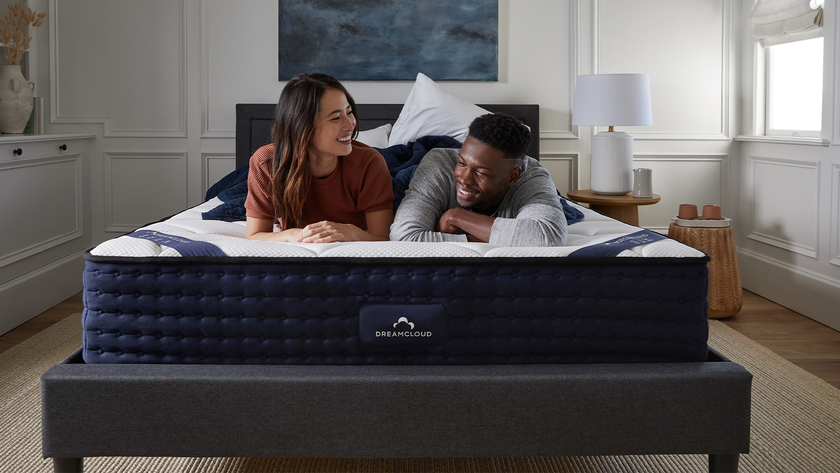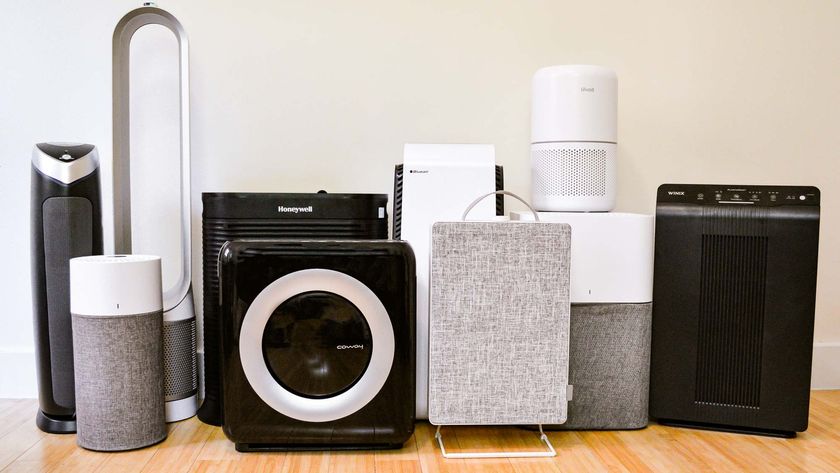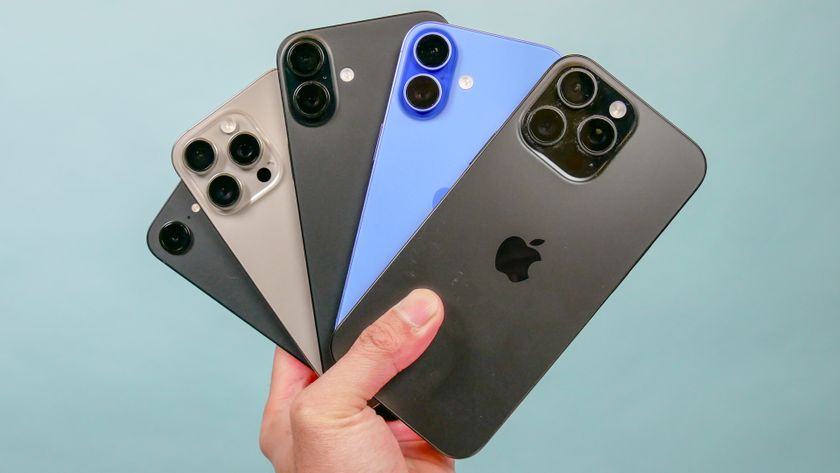Best drones in 2025
Here are the best drones based on design, ease of use, camera quality, durability and flight time.
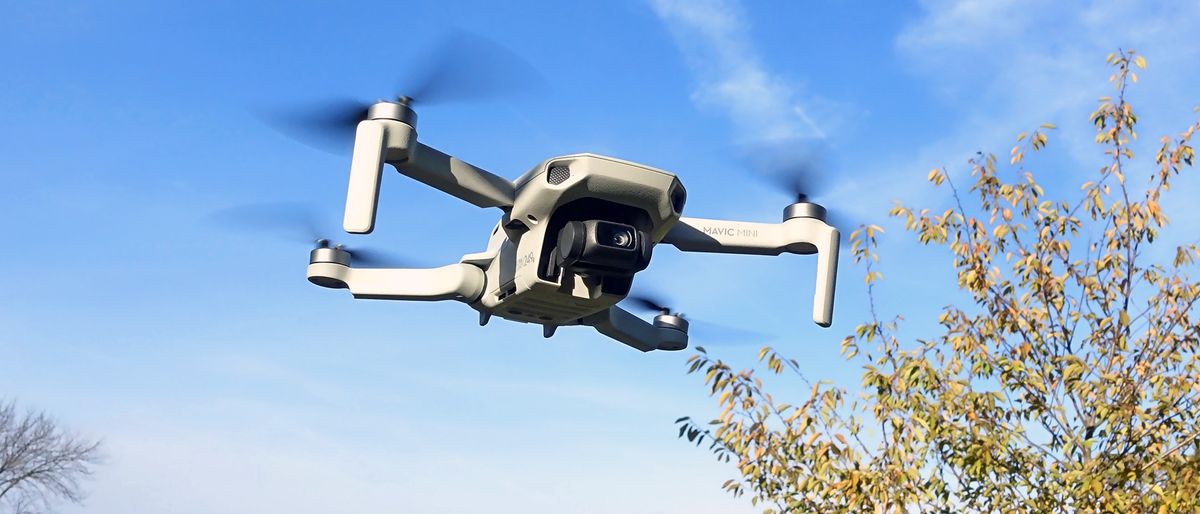
It's easier than ever to take to the sky with one of the best drones. Today's quadcopters are a cinch to pilot, and can take some impressive photos and videos. What's more, there's a drone out there to suit just about every need and price, whether you're a videographer, vlogger, or just want to have some fun.
After flying dozens of drones for more hours than we can count, we think the best drone overall is the DJI Air 3S; while not much has changed from the Air 3, you're getting amazing 4K video with great low-light performance, and even better stills, thanks to its dual-camera setup. However, because of its weight, you'll need to register it with the FAA.
If you want to avoid the feds, you'll want to check out the DJI Mini 4 Pro; at 249 grams, it's not only very small and light, but it also means you don't have to register it with the FAA. And, for its size, it takes really great photos and video, and can stay aloft for more than 30 minutes. If you're looking for something less expensive, the DJI Flip costs less than $500, is the same size and has the same camera as the Mini 4 Pro, but with half the flight time.
When buying a drone, there are a lot of things to consider, including flight time, what you want to do with the drone, and more. That's where our guide comes in. We've flown all the top models, evaluating their handling, controllers, endurance, camera quality, and more. Below are our top picks for drone pilots of every stripe.
The best drones you can buy today
Why you can trust Tom's Guide
Best overall
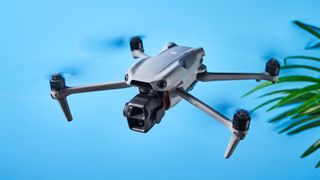

Specifications
Reasons to buy
Reasons to avoid
Ideal for content creators, travel vloggers, photographers and even drone enthusiasts who want to have fun, the DJI Air 3S is a fantastic choice. If you’re looking to capture 4K/60fps video, shoot RAW photos or film in D-Log M to capture a wider dynamic range, look no further.
With the ability to shoot 4K/60fps video, 4K/120fps slow motion footage, and even 9x16 video for social media, the Air 3S offers extensive creative possibilities. The dual camera system consists of a 50MP wide-angle camera and a 48MP medium tele camera with a 9x zoom. This drone is also equipped with next-gen smart obstacle avoidance and advanced return-to-home technology which works even in areas without satellite signals. It one-ups its predecessor, the Air 3, with an upgraded 42GB internal memory and 10-bit D-Log M video recording.
In our testing, the Air 3S excelled in capturing both stills and video, especially in low-light conditions, and handled winds up to 12 m/s like a champ. The resulting footage was extremely stable. The responsive RC-2 controller made flying effortless too.
At $1,099, the Air 3S is a more affordable option compared to the $2,199 Mavic 3 Pro while still offering competitive features. The Fly More combo, with its additional batteries and shoulder bag, is great value for money too. The Air 3S weighs more than 249g though, which means you’ll have to register with the FAA in the U.S. and the CAA in the U.K. It’s handy to download the DJI Fly app to look up up-to-date flying restrictions too.
Overall, the Air 3S is a high-performance, feature-packed drone, perfect for anyone looking to capture professional-grade aerial content.
Read our full DJI Air 3S review.
Best mini drone
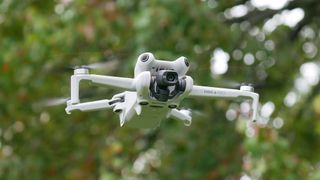
Specifications
Reasons to buy
Reasons to avoid
A step up from the DJI Mini 2 and Mini 3 is the DJI Mini 4 Pro, which is the same size and weight, but has a more advanced camera. Cleverly, the DJI Mini 4 Pro's camera can rotate 90 degrees, to make it easier to shoot vertical video and photos — great if you want to capture the entirety of a skyscraper, or want something easier to share on social media. It's also excellent at tracking moving subjects, and, thanks to added object detection sensors, can avoid trees and other things as it follows you around.
What makes the latest in the series outstanding is its improved low light performance, producing usable footage without the noise and grain other drones deliver. Even better, we love how it has the best video transmission feed in any drone to date with its 1080p 60fps transmission — making the controls feel more responsive than ever before.
Read our full DJI Mini 4 Pro review.
Best camera drone
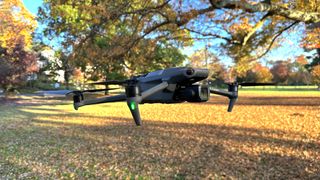
Specifications
Reasons to buy
Reasons to avoid
If you took the DJI Mavic 3 and sliced off the 28X digital zoom — and $500 — you'd get the DJI Mavic 3 Classic. Otherwise, everything we loved about the Mavic 3 is here in the Mavic 3 Classic — amazing camera quality, incredibly long flight time, and excellent obstacle avoidance.
In fact, we like the Mavic 3 Classic so much that we think it's the better option for most videographers — unless you really need ProRes video. The 28X zoom on the Mavic 3 is a neat trick, but it's ultimately not all that useful. So, save yourself half a grand and thank us later.
Read our full DJI Mavic 3 Classic review.
Best value
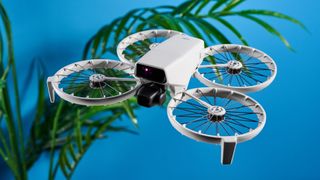
Specifications
Reasons to buy
Reasons to avoid
The DJI Flip has perhaps the best balance of features and price among the drones we've tested; it costs less than $500, but you get 48MP images, 4K video at 60 FPS, and a host of shooting and filming modes.
Unlike most of DJI's other drones, the Flip's rotors are encased in protective guards, so there's less chance of damaging the props if you run into something — a definite possibility, as this drone only has forward-facing obstacle avoidance. That's not as good as the Mini 4 Pro, which has 360 degrees of protection, but better than the Mini 3, which has none.
We really loved it compact design — the rotors fold into the body, much like the HoverAir X1 — and the prop guards also protect things while they were in our bag.
Video performance of the Flip was comparable to that of the pricier DJI Mini 4 Pro; we were stunned at the detail and colors in the footage we shot. However, in a concession to the Flip's lower price, its flight time — still a considerable 31 minutes — is far less than that of the Mini 3, which can go for nearly an hour with its extended battery.
In short, the DJI Flip strikes the perfect middle ground for beginning to intermediate drone pilots.
Read our full DJI Flip review.
Best cheap drone
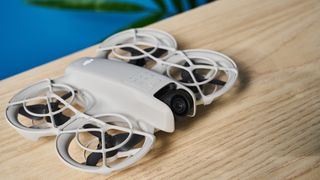
Specifications
Reasons to buy
Reasons to avoid
For an entry-level drone, the DJI Neo is chock-full of pro specs. Designed minimalistically, the Neo weighs just 4.76 ounces and measures 6.18 x 5.11 x 1.9 inches, so it’s compact and portable. With the new RC-N3 controller or even the DJI Fly app, the Neo is extremely easy to fly and control — although, it doesn’t feature object avoidance, so we had to be more careful when flying this drone as compared to some other models from DJI, like the Mini 4, which do have this feature.
The Neo is capable of shooting 4K video at 30fps, and with DJI’s latest stabilization algorithm, this small-but-mighty drone captured buttery smooth footage and detailed stills in all of our flights. However, it lacks a genuine 3-axis gimbal, like you'll find with the Mini 3.
Also unlike DJI's other drones, there's no SD card slot — you have to make due with its 22GB of internal storage — but a Quick Transfer feature lets you quickly download the footage onto your phone. One last caveat: The Neo's flight time of around 18 minutes is about half that of DJI's other drones, but all of these are acceptable compromises given the low price and great video that this drone takes.
Read our full DJI Neo review.
Best selfie drone
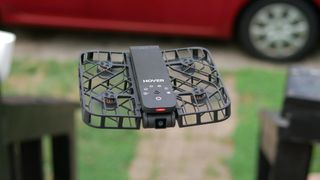
5. HoverAir X1
Specifications
Reasons to buy
Reasons to avoid
Looking for a versatile drone that's super lightweight and can be controlled without any prior piloting experience? The HoverAir X1 is the best drone for the job, offering a great selection of features for the flier who wants more without having a lot of flying experience. What makes the HoverAir X1 unique is that it's incredibly compact, so much so that it can fit in a pocket.
Meanwhile, it flies all on its own with preset flying modes to choose from. We've also put its subject tracking feature to the test, and it manages to keep subjects in frame even when there's some obstacles. For its size, we're impressed by its video performance and long battery life.
Read our full HoverAir X1 hands-on.
Best FPV drone
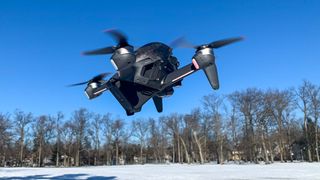
Specifications
Reasons to buy
Reasons to avoid
For those who want to get a taste of drone racing — or simply want to see the world as a bird would — the DJI FPV will get you there. This drone comes with a pair of FPV goggles that give you an incredibly immersive view of what the drone is seeing, with no noticeable lag or delay.
The DJI FPV has three mode settings, so novices can increase its capabilities as their abilities grow. In full manual mode, the FPV can reach speeds of up to 87 miles per hour — just watch out for trees! It's incredibly maneuverable, zipping up, down, left and right like a hummingbird. Get an extra battery, though, because the FPV's only lasts 20 minutes, and you'll want to spend a lot more time in the air.
Read our full DJI FPV review
Best immersive drone
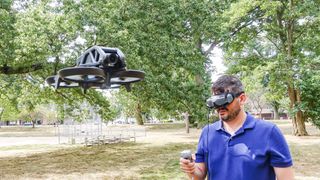
Specifications
Reasons to buy
Reasons to avoid
For those who want a real taste of drone racing, the DJI Avata is a good place to start. Like the larger and older DJI FPV, the Avata comes with a pair of FPV goggles, so that you get a first-person view of where your drone is flying, delivered straight to your eyeballs. It also comes with a clever handheld controller that makes flying the Avata more like piloting an aircraft.
The Avata was a lot of fun to fly, and easy to pick up. Its fixed propeller guards also make it better able to withstand the errant crash into the ground, a tree, or whatever else is in its flight path. We didn't feel as queasy using the new goggles that came with the Avata as we did with DJI's older FPV goggles, but these were slightly less comfortable. Still, you won't be wearing them for too long a time, as the Avata's battery life of 18 minutes is much shorter than photography-focused drones.
Read our full DJI Avata review.
Best non-DJI drone
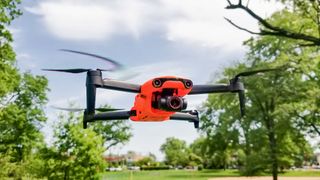
Specifications
Reasons to buy
Reasons to avoid
While it seems like DJI makes all the best drones, Autel has a number of models, including the Evo Nano+, that offer a really compelling alternative. We found the Evo Nano+ just as maneuverable and easy to fly as any DJI drone, and the Nano+'s small size and light weight means you can take it almost anywhere. We especially like that the drone comes in more than one color, unlike DJI's drab gray.
Video and photos taken with the Evo Nano+ were sharp, crisp, and colorful, and the camera's 3-axis gimbal kept everything steady and smooth. However, the Nano+ has a slightly shorter flight time, and is a bit more expensive than DJI drones with similar capabilities, such as the Mini 3 Pro. But, if you're looking for something different, check out Autel.
Read our full Autel Evo Nano+ review.
Best water-resistant drone
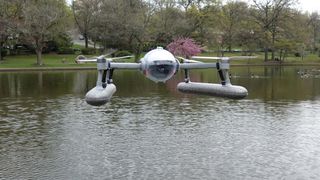
Specifications
Reasons to buy
Reasons to avoid
The Powervision Poweregg X can go where most other drones can't: In the water. That's because the Poweregg X has a removable waterproof shell and pontoons that allow you to land and take off from ponds, lakes—even the ocean, if it's calm enough. And, the drone's body can even be used as a camcorder, making it useful even when it's not in the air.
We found that the Poweregg X flew well, if a bit slowly (the pontoons do weigh it down), can fly up to 25 minutes or so on a charge, and has pretty good object tracking. However, video and photo quality, while above average, did not measure up to DJI's drones. Then again, try landing one of DJI's drones in the water and see what happens.
Read our full Powervision Poweregg X review.
Also tested
DJI Mini 3 (★★★★☆)
This handheld drone can fly for nearly an hour with its extended battery, and its 4K camera can flip 90 degrees, so you can take vertical video. When we reviewed it, we found it super-easy to fly, and its video quality was great for the price. Even better: you can now get it for less than $500.
Read our full DJI Mini 3 review.
PowerUp 4.0 (★★★★☆)
This takes the traditional paper airplane and brings it to the next level. This little kit attaches to an ordinary airplane, and thanks to a pair of propellers, lets you pilot the plane from your smartphone. The kit comes with four pieces of paper with an airplane pattern, but you can also download patterns for free from the company's website.
There's a bit of a learning curve when it comes to keeping the PowerUp 4.0 in the air. You'll need a lot of space to fly the plane; we recommend a football field. But once you get the hang of it, you'll be surprised at how far it will go.
Read our full PowerUp 4.0 review.
How to choose the best drone for you
Drones aren't just fun to fly. They can let you capture breathtaking footage, some in high-resolution 4K video. They're also more affordable than ever, as quality beginner models now cost less than $60. Good camera drones start at a few hundred dollars, and they're great for simple tasks like checking your gutters for leaves. More complex drones, starting at less than $1,000, offer customizable and programmable features, turning them into truly autonomous devices that can make their own decisions.
Drones aren't that complicated, but there are a few key features you should consider when you are shopping. There are also some key rules you need to follow when you take to the air.
Remote Control
Most drones use a remote control with two joysticks — a bit like one of the best PC game controllers. One stick controls what's called the attitude of the quadcopter, including roll (tilting left and right) and pitch (tilting up and down). The other stick controls throttle and the rotation of the quadcopter. A good remote control should fit well in the hand, with sticks resting comfortably under your thumbs and providing a smooth, responsive feel that allows you to guide the quadcopter by touch.
Some less expensive models skip the remote control, or offer it as an extra-cost feature, and instead use a smartphone connected via Wi-Fi and a flying app. These apps often provide a live video view from the quadcopter camera. However, apps don’t allow the precision of real controllers: It is easier for your thumbs to slip, possibly causing a crash.
Repairability
Despite what the ads tell you, drones crash all the time. A good drone will take an unplanned descent and ground interface (aka: a crash) in stride, without damaging the frame. It will also include shields to protect the rotors and electronics from harm.
Regardless, things still get broken sometimes, particularly racing drones. A good model will offer a ready supply of cheap parts like rotors and struts to replace the broken ones, and will make it easy to swap these parts out when required. The same is true of batteries.
Battery life
Most drones will last between 20 to 30 minutes on a charge, and are designed so that you can quickly swap out batteries. To ensure that you can keep filming, it's a good idea to purchase extra batteries. Just make sure to charge them beforehand!
Camera quality
Want to show off your aerial exploits? A camera, either built-in or add-on, can capture those dramatic vistas for posterity. The best drones will have cameras that can record video at resolutions of 4K or higher, but even budget models are getting better, able to capture video at 1080p. However, they tend to use smaller image sensors, so the quality won't be as good.
While not covered in this guide, there are professional drones which let you attach mirrorless or DSLR cameras, which provide even greater image quality that built-in cameras. However, these drones typically cost upwards of $2,000.
The best camera drones will also mount their cameras on a gimbal, so that your image stays steady as the drone is flying around. If video is your priority, look for a drone that has a three-axis gimbal; that will give you the most stable image.
Some drones also offer first-person view (FPV), sending a pilot's-eye view from the drone itself to a phone or tablet. Some models offer video goggles for the ultimate pilot-seat flying experience.
Features
Drones are getting smarter; now, instead of just flying around based on manual inputs, you can program drones to fly pre-programmed routes, or even follow specific objects, such as people and vehicles. Depending on your needs, it's worth examining what features a drone has before buying one.
FAA regulations
If you want to fly a drone in the U.S., there are a number of rules and regulations you need to follow. For starters, any drone weighing more than 250 grams (0.55 pounds) needs to be registered (it's a $5 fee), and have to carry your license with you while flying the drone. Here's how to Register Your Drone with the FAA. However, there are certain areas in the U.S. where you can fly drones without having to register them. You can find those locations on this FAA map.
There are also restrictions as to where you can fly drones. The most important two: Never fly around or above people, and always keep your drone in sight. The FAA has a full list of safety guidelines for model aircraft that you should check before you take off. Mapbox provides a great interactive map of no-fly areas, and local RC (Remote Control) aircraft clubs may list fields that they use.
If you're planning to fly a drone for non-recreational purposes (i.e., if you're using it for a business purpose), the laws are a bit more stringent. You can find all the information at the FAA's site for drone pilots.
How we test the best drones
When we take a new drone out for a spin, we evaluate it based on a number of factors:
- Design: How well is the drone built, and does it look good? If it comes with a controller, we take a look at its ergonomics.
- Durability/Repairability: Face it. You're going to crash your drone at least once, but a good model should be able to survive a few mishaps without a problem. And, if something happens to break (it's usually a rotor), how easy is it to repair?
- Flight Performance: How easy is the drone to fly? Is is stable when hovering, or does it require a lot of stick work? How does it respond to your commands?
- App: How intuitive is the app? What sort of features are available?
- Camera Quality: If the drone has a camera, then how good are the photos and videos it takes?
- Flight time: How long can the drone stay in the air before its battery runs out? This varies a lot based on the size of the drone, but the best drones have batteries that last up to 25-30 minutes.
- Price: Obviously, we don't expect a $50 drone to perform as well as a $1,000 drone, so we take its cost into consideration when rendering a final verdict.
Drone FAQ
Can drones fly for hours?
It all depends on the type of drone you buy. Drones that look like airplanes, which can use the air to stay aloft, can remain airborne for a long time. However, drones that look more like helicopters — most drones have four rotors — can only stay up for about half an hour at best. However, flight time is slowly improving, and the best drones can stay in the air for around 40 minutes.
What are the different types of drones?
Drones generally fall into a few categories:
Mini or micro drones, which can fit in the palm of your hand, make great starter drones. Because of their size, they'll usually only have a couple minutes of flight time.
Racing drones, which are slightly larger, and are incredibly light, fast and nimble. Most racing drones are hand-built and easily repairable, as they tend to crash into things often. They're almost always used in conjunction with a pair of FPV goggles. Like mini drones, their flight time is often less than 10 minutes.
Camera drones are purpose-built to take video and photos. They will have a gimbal-mounted camera and software that allows them to track people or objects, or fly predetermined routes. These drones will generally have the longest flight times.
Toy drones can include mini drones, but generally cost less than $100. Many will have cameras, but video quality will be far worse than what you'll find with a camera drone. Their flight time will average around 10 minutes, and will have few autonomous features. However, they're great for learning the basics.
More from Tom's Guide
Sign up to get the BEST of Tom's Guide direct to your inbox.
Get instant access to breaking news, the hottest reviews, great deals and helpful tips.

Michael A. Prospero is the U.S. Editor-in-Chief for Tom’s Guide. He oversees all evergreen content and oversees the Homes, Smart Home, and Fitness/Wearables categories for the site. In his spare time, he also tests out the latest drones, electric scooters, and smart home gadgets, such as video doorbells. Before his tenure at Tom's Guide, he was the Reviews Editor for Laptop Magazine, a reporter at Fast Company, the Times of Trenton, and, many eons back, an intern at George magazine. He received his undergraduate degree from Boston College, where he worked on the campus newspaper The Heights, and then attended the Columbia University school of Journalism. When he’s not testing out the latest running watch, electric scooter, or skiing or training for a marathon, he’s probably using the latest sous vide machine, smoker, or pizza oven, to the delight — or chagrin — of his family.
-
lourson Archived comments are found here: http://www.tomsguide.com/forum/id-2333707/drones-2014.htmlReply -
glitchsys Brendan, SamsClub I think.Reply
I just got the U818A HD+ (under the brand name 'Holy Stone'). I wanted something a little better than the regular U818A and the Blade Nano QX seemed too much like a toy. With the 90 dollar U818A HD+ (it's more upgraded than the U818A mentioned in this article, it has a 720p camera, return to home and headless features) I hope to learn to fly a drone and see if I enjoy it. I think it borders between a toy and a real drone. If the neighbors or whomever gets upset about the drone I can say "Relax, it's not a professional drone, it's just a cheap toy drone" and they'll be like "oh, ok. cool toy" and then let me fly/learn in peace. Once I master the U818A HD+ if I really enjoy it and want something more, next stop will be the DJI Phantom 3. But I figured besides learning to fly one, I'll get a better sense of peoples reactions around my house and around the park when I fly the drone. If I encounter nothing but resistance, or I simply don'y enjoy it, then at least I didn't waste 650. -
Brandon_31 Just curious why there is no mention of the Syma x8c? It would be great for beginners if not for it's size and mass, but other than that it is very affordable at ($70-100), very stable, easy to fly, has a cam, headless mode, and best of all it is very tough. I have crashed mine many many times and some times very hard crashes from 30ft up on to asphalt without an issue other than the plastic body getting just a little off, which is easily fixed.Reply
True is is advertised at only 50 meter range, but the truth is more like 300 meters. I have tested it to 300 meters and still not lost signal. Many others have reported up to 450 meters right out of the box. There is also an easy to do modification that gets you over 1000 meters.
Overall I see it as a top 10 drone. I see it in the top 2 for affordable drones. It's not a "toy" or a "agile" quad, but it is a perfect camera platform when on a budget. If you want a Phantom, but cannot afford it, give the Syma x8 series a try. You won't have GPS, but once you get used to controlling it manually, it can be used almost the same as the Phantom. -
Cory Mangine You really should change UDI drone the the Syma X5 because it is more maneuverable has a better battery life and is more durable. Plus the shell on the UDI is cheap plastic junk and breaks easily. So really you can get a better drone for the same price. Plus there is no way you'll be able to get a DJI Phantom 3 for under 900$ anywhere unless its black friday.Reply -
tennis daddy Seems like prices are falling fast - both Best Buy and Amazon have DJI Phantom 3 Standard for $500. That's going to be the price-point for the rest to beat.Reply -
Stokes344 The Phantom 3 standard is now $499 and the advanced is $799. They had a $200 price drop starting the beginning of the year for the companies 10th anniversary.Reply -
realdaveking Thanks Brandon_31 for the tip on the syma x8. Just getting my feet wet in this hobby and that is a nice looking drone.Reply -
ROG2000 IMO a better list:Reply
1) Hubsan X4 H107L
2) Syma X8C
3) Parrot Bebop 2 (I will agree with this one)
4) Yuneec Q500 4K
5) 3DR Solo
6) Yuneec Typhoon H -
akattkisson I can't wait to get my hands on the DJI Phantom 4. Follow me feature is both creepy and cool.Reply
